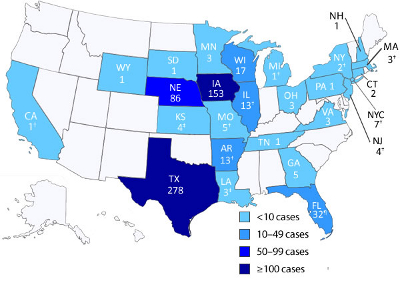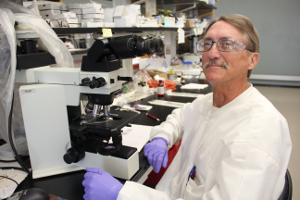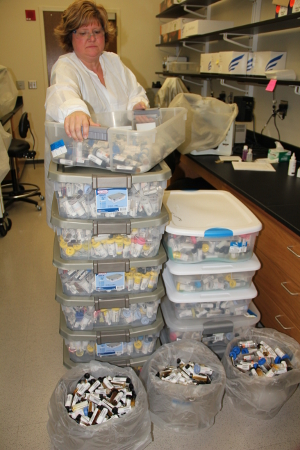
| Sept. 2013 | |||||||||||
| Top stories | |||||||||||
| In the news | |||||||||||
| Photos | |||||||||||
| Contact us | |||||||||||
| Archive | |||||||||||
|
Cyclospora on the decline after labs rally to meet demand |
The Cyclospora outbreak that was first identified in Iowa and has sickened 643 in 25 states as of Sept. 24, may be slowing down, according to Centers for Disease Control and Prevention data.
 Cyclosporiasis cases notified to CDC as of September 24, 2013.
Cyclosporiasis cases notified to CDC as of September 24, 2013.
The highest incidents of cases occurred in Texas (278), Iowa (153) and Nebraska (86). The number of Iowa and Nebraska cases peaked in mid-June and have been linked to salad mix produced by Taylor Farms de Mexico. Cases reported in Texas increased more slowly, peaking in late June through early July. Preliminary analysis of the Texas cases does not show a connection to Taylor Farms de Mexico.
“Although the investigation of cases continues, available evidence suggests that not all of the cases of cyclosporiasis in the various states are directly related to each other,” the CDC reported.
Michael Last, clinical laboratory technical specialist at the Hygienic Laboratory, identified the first cases in the outbreak.
 Mike Last
Mike Last
"Mike's extensive experience in parasitology allowed him to identify the parasite through conventional methods rather than the special stains normally used to detect the parasite in humans," explained Mary DeMartino, interim director of the Disease Control Division. "Without this expertise, it may have taken longer to detect the outbreak and, therefore, determination of the source would also have been delayed."
The outbreak increased the laboratory's parasitology workload four to five times the normal number of daily specimens. To compensate, the lab dedicated four specialists to read the Cyclospora slides while other staff took over daily parasitology work. Lab scientists worked 10- to 12-hour days, seven days a week for several weeks to keep up with the sample flow.
 Jaye Boman, interim general
supervisor for bacteriology,
stacks containers of the
thousands of specimens that
the Hygienic Laboratory has
tested for Cyclospora since the
outbreak began in July.
Jaye Boman, interim general
supervisor for bacteriology,
stacks containers of the
thousands of specimens that
the Hygienic Laboratory has
tested for Cyclospora since the
outbreak began in July.
Local and national public health partners helped the Hygienic Laboratory keep pace with other parasitology testing during the outbreak. The VA Medical Center in Iowa City, the Missouri Public Health Lab, the Wisconsin State Laboratory of Hygiene, the Maryland Public Health Lab and the Georgia Public Health Lab agreed to take specimens and perform routine parasitology testing, allowing Hygienic Laboratory staff to concentrate on Cyclospora-specific specimens.
Cyclospora is a single-celled parasite that infects people who consume contaminated food or water. It is not spread person-to-person. Symptoms of cyclosporiasis, which can last for weeks, include five to 15 bouts of watery diarrhea per day, fatigue and anorexia. Secondary symptoms include nausea, flatulence, abdominal cramping, low-grade fever and weight loss. Antibiotic therapy is the standard treatment once the disease is identified.